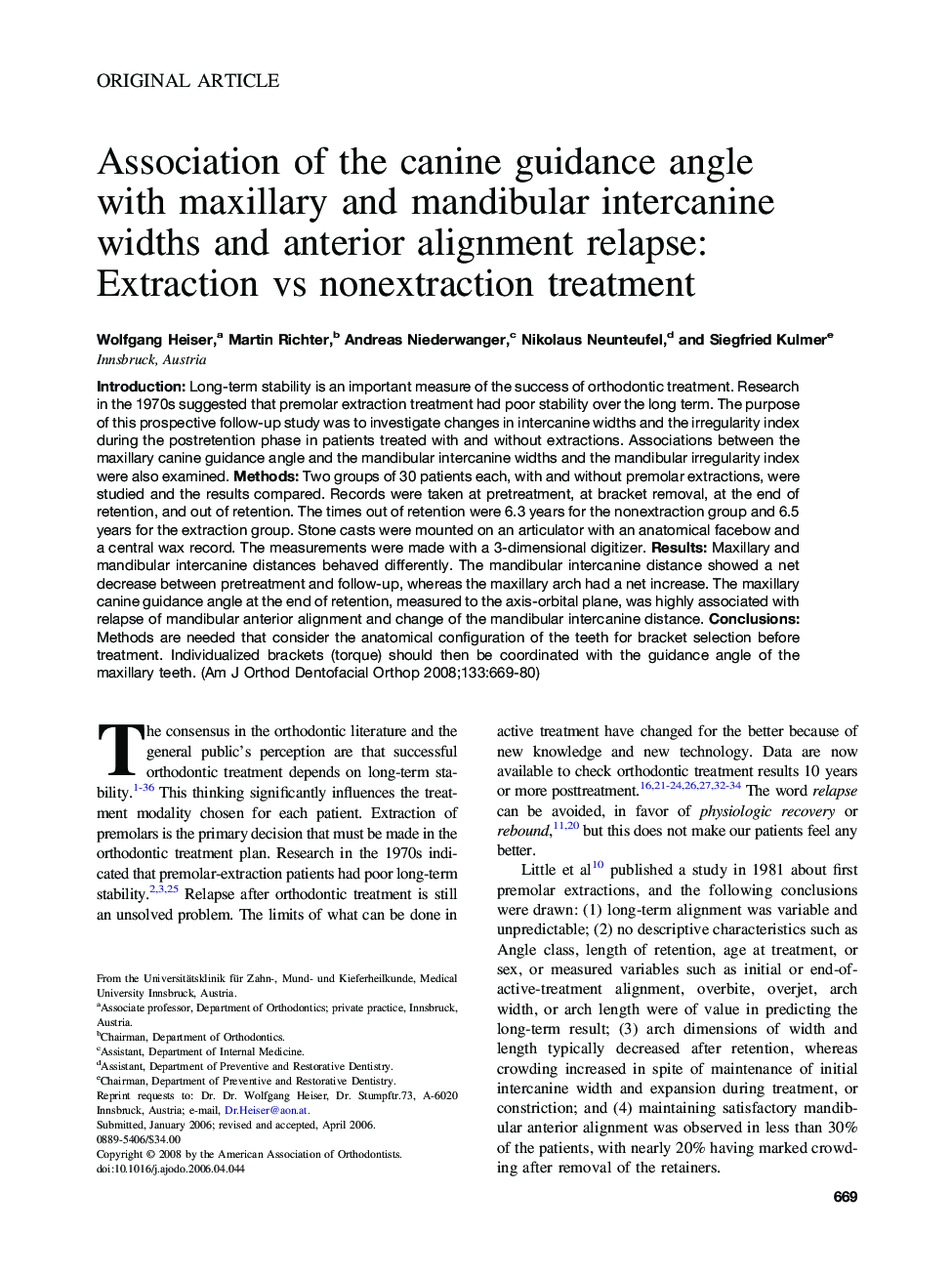| Article ID | Journal | Published Year | Pages | File Type |
|---|---|---|---|---|
| 3120235 | American Journal of Orthodontics and Dentofacial Orthopedics | 2008 | 12 Pages |
Introduction: Long-term stability is an important measure of the success of orthodontic treatment. Research in the 1970s suggested that premolar extraction treatment had poor stability over the long term. The purpose of this prospective follow-up study was to investigate changes in intercanine widths and the irregularity index during the postretention phase in patients treated with and without extractions. Associations between the maxillary canine guidance angle and the mandibular intercanine widths and the mandibular irregularity index were also examined. Methods: Two groups of 30 patients each, with and without premolar extractions, were studied and the results compared. Records were taken at pretreatment, at bracket removal, at the end of retention, and out of retention. The times out of retention were 6.3 years for the nonextraction group and 6.5 years for the extraction group. Stone casts were mounted on an articulator with an anatomical facebow and a central wax record. The measurements were made with a 3-dimensional digitizer. Results: Maxillary and mandibular intercanine distances behaved differently. The mandibular intercanine distance showed a net decrease between pretreatment and follow-up, whereas the maxillary arch had a net increase. The maxillary canine guidance angle at the end of retention, measured to the axis-orbital plane, was highly associated with relapse of mandibular anterior alignment and change of the mandibular intercanine distance. Conclusions: Methods are needed that consider the anatomical configuration of the teeth for bracket selection before treatment. Individualized brackets (torque) should then be coordinated with the guidance angle of the maxillary teeth.
